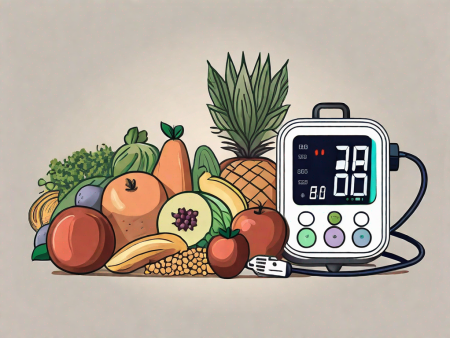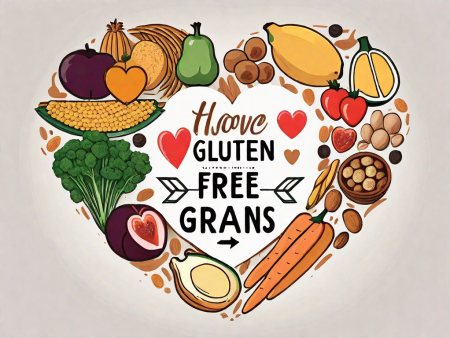Discover how muscle mass affects weight as we age.
How Does Muscle Mass Impact Weight as We Age?
Muscle mass, it turns out, is more than just a way to lift heavy objects or impress people at the gym. As we age, muscle mass actually plays a crucial role in maintaining a healthy weight. It’s like having your own personal army of calorie-burning warriors inside your body! Let’s dive into the fascinating world of muscle mass and how it affects our weight as we journey through the golden years.

Understanding the Basics of Muscle Mass and Aging
Before we can fully appreciate the impact of muscle mass on weight, let’s first grasp what muscle mass is all about. Simply put, muscle mass refers to the amount of muscle tissue in the body. Muscles are not just responsible for movement; they also play a crucial role in maintaining our overall health and well-being.
As we age, our bodies undergo numerous changes, and unfortunately, one of those changes involves a natural decline in muscle mass. Yes, you read that right – as the candles on our birthday cakes multiply, our muscle mass does the opposite, slowly but surely shrinking. This phenomenon, known as sarcopenia, is like a sneaky pickpocket stealing our muscle fibers.
Sarcopenia is a multifactorial condition influenced by various factors such as hormonal changes, decreased physical activity, poor nutrition, and chronic illnesses. It affects both men and women, although it tends to be more pronounced in older adults. The decline in muscle mass can have significant consequences on our overall health and quality of life.
Loss of muscle mass can lead to a decrease in strength, mobility, and functional independence. It can also increase the risk of falls and fractures, as weakened muscles are less able to support and protect our bones. Additionally, reduced muscle mass can negatively impact our metabolism, making it easier to gain weight and harder to lose it.
However, fear not, for understanding the aging process and its effect on muscles can be the first step towards preserving our precious muscle mass. By adopting a proactive approach, we can slow down the rate of muscle loss and maintain our strength and vitality as we age.
Regular exercise, particularly resistance training, is essential for preserving and building muscle mass. Engaging in activities that challenge our muscles, such as weightlifting or bodyweight exercises, stimulates muscle growth and helps counteract the effects of sarcopenia. It’s never too late to start – even small changes in physical activity can make a big difference.
In addition to exercise, proper nutrition is crucial for maintaining muscle mass. Consuming an adequate amount of protein is essential, as it provides the building blocks for muscle growth and repair. Including lean meats, fish, eggs, dairy products, legumes, and nuts in our diet can help ensure we meet our protein needs.
Furthermore, staying hydrated is important for muscle health. Water plays a vital role in nutrient delivery, waste removal, and temperature regulation, all of which are essential for optimal muscle function. Aim to drink enough water throughout the day to support your overall well-being.
Lastly, it’s important to prioritize rest and recovery. Giving our muscles time to repair and regenerate is crucial for their growth and maintenance. Make sure to get enough sleep and allow for adequate rest days between intense workouts.
In conclusion, while aging may bring about a decline in muscle mass, it doesn’t mean we have to accept it as an inevitable part of getting older. By understanding the basics of muscle mass and aging, and taking proactive steps to preserve and build muscle, we can maintain our strength, vitality, and overall well-being as we journey through life.
The Correlation Between Muscle Mass and Body Weight
Now that we know a thing or two about muscle mass and the aging process, let’s explore the intriguing correlation between muscle mass and body weight. It turns out that muscle mass influences weight in more ways than we might have imagined!
When we think about weight, we often focus solely on the number that appears on the scale. However, there’s more to the story than meets the eye. Picture this: you have a pound of feathers and a pound of iron. Which one takes up more space? The feathers, of course! Similarly, the more muscle mass we have, the more space it occupies in our bodies. So even if the scale shows the same number, having more muscle mass can make us appear leaner and more toned, and who doesn’t want that?
But that’s not all, my friends. Brace yourselves for this nugget of knowledge: muscle mass is like a metabolic furnace. Yes, you heard me right – it burns calories even while we’re binge-watching our favorite sitcoms. The more muscle mass we have, the higher our metabolism, and the more calories we burn throughout the day. It’s like having a secret ally in our battle against unwanted pounds!
Now, let’s talk about metabolism – that marvelous process that keeps our bodies running like well-oiled machines. As we age, our metabolism tends to slack off and take longer coffee breaks. But fear not, for muscle mass can come to the rescue once again.
Think of muscle mass as the fuel that keeps our metabolic engine roaring. When we have less muscle mass, our metabolism slows down, burning calories at a snail’s pace. On the other hand, having more muscle mass revs up our metabolism like a turbocharger, ensuring our calorie-burning machinery stays in top shape. So, by preserving and building muscle mass, we can give our metabolism the boost it needs to keep our weight in check!
It’s fascinating to see how muscle mass and body weight are interconnected. By understanding the impact of muscle mass on weight, we can make informed decisions about our fitness goals and overall health. So, the next time you hit the gym or engage in strength training exercises, remember that you’re not just building muscle – you’re also setting yourself up for a healthier and more balanced weight.
Furthermore, the benefits of muscle mass extend beyond weight management. Having more muscle mass can improve our overall physical performance, making everyday tasks easier and enhancing our athletic abilities. Additionally, muscle mass plays a crucial role in maintaining bone health and preventing age-related conditions such as osteoporosis.
So, whether you’re looking to shed a few pounds, improve your athletic performance, or maintain optimal bone health, focusing on building and preserving muscle mass is a wise choice. Remember, it’s not just about the number on the scale – it’s about nurturing our bodies and empowering ourselves to live our best lives.
The Impact of Decreased Muscle Mass in Older Adults
Now, let’s shift gears and delve into the consequences of decreased muscle mass in older adults. Unfortunately, losing muscle mass is more than just a matter of vanity – it can have profound effects on our overall health and well-being.
As we age, our bodies undergo various changes, and one of the most noticeable is the loss of muscle mass. This process, known as sarcopenia, can have a significant impact on our physical abilities and overall quality of life.
Physical Changes Due to Loss of Muscle Mass
When our muscle mass dwindles, our bodies start playing a cruel game of Jenga. The loss of muscle tissue can lead to physical changes, such as reduced strength, balance, and flexibility. Suddenly, that tie-dye yoga pose we used to ace becomes as elusive as finding a needle in a haystack.
Moreover, decreased muscle mass can give rise to a condition known as frailty. Picture walking on eggshells, except you’re the egg, and every step feels precarious. Frailty increases the risk of falls, fractures, and other mishaps, making daily activities a tightrope walk.
But it doesn’t stop there. The loss of muscle mass also affects our metabolism. Muscles are metabolically active tissues, meaning they burn more calories at rest compared to fat. So, when we lose muscle, our metabolic rate decreases, making it easier to gain weight and harder to lose it.
Health Risks Associated with Low Muscle Mass
But wait, there’s more! Losing muscle mass can also pave the way for some unwelcome health issues. Studies have shown that decreased muscle mass is associated with a higher risk of chronic conditions, including diabetes, cardiovascular disease, and even mortality. It’s like our muscles are superhero protectors, shielding us from the villains of poor health.
Furthermore, the loss of muscle mass can have a negative impact on our bone health. Muscles help support and protect our bones, so when they weaken, our bones become more susceptible to fractures and osteoporosis.
Additionally, decreased muscle mass can lead to a decline in cognitive function. Research has found a link between muscle mass and brain health, suggesting that maintaining muscle mass may help preserve cognitive abilities as we age.
Furthermore, the loss of muscle mass can affect our immune system. Muscles produce certain proteins that play a crucial role in immune function. Therefore, a decline in muscle mass may weaken our immune response, making us more vulnerable to infections and illnesses.
In conclusion, the impact of decreased muscle mass in older adults goes far beyond mere aesthetics. It affects our physical abilities, increases the risk of falls and fractures, and is associated with a higher likelihood of chronic diseases and mortality. Maintaining muscle mass through regular exercise and a balanced diet is essential for promoting healthy aging and preserving overall well-being.
Strategies to Maintain Muscle Mass as We Age
Now that we’re fully aware of the importance of muscle mass, let’s discuss some effective strategies to preserve this precious commodity as we gracefully journey through the sands of time.
Importance of Protein in Preserving Muscle Mass
Protein, the building block of muscles, deserves a standing ovation for its role in preserving muscle mass. As we age, our bodies become less efficient at using protein, making it crucial to ensure we’re getting enough of this macronutrient in each of our meals.
But worry not, my friends, for protein doesn’t only come in the form of boring chicken breasts or bland tofu. Embrace the diversity that the protein kingdom has to offer – lentils, Greek yogurt, quinoa, and even black beans can make for scrumptious muscle-preserving meals! Let’s put the “delicious” back in muscle mass preservation, shall we?
Exercise and Its Role in Muscle Maintenance
We can’t talk about muscle mass preservation without mentioning the magic of exercise. Whether it’s dancing like nobody’s watching, pumping iron in the gym, or going for a leisurely stroll, regular exercise is key to maintaining and even building that glorious muscle mass.
Now, before you start building Rome in a day, remember that consistency is the name of the game. Aim for a mix of strength training exercises to keep those muscles engaged and cardio activities to boost your overall endurance. Find activities that spark joy and motivate you to keep moving – after all, exercise should be a celebration of our bodies, no matter our age!
The Future of Muscle Mass Research
As we’re nearing the end of our muscle mass extravaganza, it’s only fair to touch upon the exciting future of muscle mass research. The science behind muscle mass and aging is evolving faster than a chameleon changing colors, and there are some intriguing developments on the horizon.

Current Findings on Muscle Mass and Aging
Scientists and researchers are working tirelessly to unravel the intricate relationship between muscle mass and aging. From identifying potential therapeutic targets to understanding the genetic factors that influence muscle mass, the current findings provide a glimmer of hope for the future of muscle mass preservation.
Potential Developments in Muscle Mass Preservation
From groundbreaking medications to innovative exercise routines, the potential developments in muscle mass preservation are as endless as the stars in the night sky. Perhaps we’ll witness the rise of muscle-enhancing pills or the creation of gyms specifically designed for golden-agers.
While we can’t predict the future with 100% certainty, it’s safe to say that muscle mass preservation will continue to be a hot topic in health research. So stay curious, stay active, and who knows – you might just be the next pioneer in the magnificent world of muscle mass preservation!







Can you be more specific about the content of your article? After reading it, I still have some doubts. Hope you can help me.